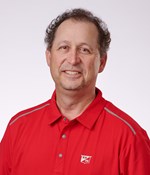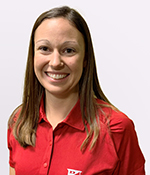Agronomy Update: Managing Alfalfa Stand for Peak Performance; Welcome Mark Gibson
BY DAIRYLAND SEED AGRONOMY TEAM
ALFALFA FERTILITY 101
Profitable alfalfa crops are driven by yield, requiring a strong fertility program in order to achieve desirable regrowth throughout the growing season and store adequate root carbohydrates ahead of winter dormancy. Considering that one dry ton of alfalfa removes about 14lbs of P2O5 and 58lbs of K2O from the soil, most alfalfa fields are likely deficient in key nutrients that are restricting yield potential and stand longevity. With harvest season right around the corner, managing your alfalfa stand for peak performance starting with the first cutting will set that field up for success all summer long. Since the first crop of alfalfa taken off the field yields the most tons, it also means it takes the most nutrients out of the soil that need to be replenished in order to keep that field productive and thriving.

- Review the basics by assessing alfalfa stand plant density before applying fertilizer to ensure that your field has enough yield potential to justify extra inputs. Be aware of the alfalfa dry matter that you removed in the previous year(s) and consider the fertilizer requirements necessary to not just maintain adequate fertility but what is needed to increase it. Farms that stick to providing high basic fertility levels over time have more success producing high levels of quality forage year after year.
- Soil tests are the best indicators of fertility needs, especially when combined with tissue samples early in the growth cycle. Waiting for plants to show visual signs of nutrient deficiency means you’ve already lost yield potential or could mis-diagnose symptoms as environmental factors. If you’re spreading or incorporating animal waste into your alfalfa fields, manure tests are vital to your nutrient management program. Don’t overlook this necessary component.
- It’s essential to be sure the major fertility components are at levels that promote high yields and high quality first before considering micronutrient needs. Unless N, P, and K are at sufficient levels in the soil and available to the plant, the additional products won’t make much of a difference and may simply be a waste of money.
- Alfalfa absorbs most nutrients in the top 6 to 8 inches of soil, making the form of application just as important. Work with your trusted agronomist to decide if topdressing or soil incorporation will work better for the product being used and whether the plant is able to mobilize that nutrient from the soil.
- With alfalfa’s symbiotic relationship with the nitrogen-fixing bacteria Rhizobium, additional Nitrogen applications are not necessary unless the field has not received adequate liming or the soil is light and dry in the seeding year. In these scenarios, 30-50 lb/acre of Nitrogen could boost productivity.
- Alfalfa needs relatively large amounts of phosphorus and potassium to support yield and decease disease susceptibility. These nutrients can also be relatively immobile when added directly to the soil, especially if the pH is not ideal. Applications of phosphate and potash need to be monitored closely since luxury consumption is possible and excess of these nutrients are undesirable for cattle feed. If tissue samples support the need for either of these, apply immediately following first cutting.
- With the increasing number of foliar diseases plaguing alfalfa, consider the use of a fungicide when heavy disease pressure is evident or a long cutting schedule is preferred. Research trials with the University of Wisconsin Extension Team showed little economic benefit with fungicide application outside these two scenarios, noting the cost rarely justified the potential yield and quality increases. Analyze your cutting schedule, cost of product, hay value, and disease potential to make a final determination for each field.

- Apply a fertilizer after 1st cutting to help carry the stand through the season and then again after 3rd cutting to promote adequate levels going into winter. These split applications ensure proper nutrients are available all year round to maximize plant and soil health. Rate recommendations vary slightly by region or state but will lead to similar results. Identify your soil test categories in Tables 7.1 and 7.2, then find your annual fertilizer needs in Table 7.4.


WELCOME MARK GIBSON TO THE DAIRYLAND SEED AGRONOMY TEAM
We are excited to introduce Mark Gibson as the Dairyland Seed Eastern Regional Agronomist replacing the recently retired Rod King. His primary responsibilities include providing agronomic services for District Sales Managers, customers, dealers and prospects. Additionally, he is involved with product advancements and product training.
Mark served four years in the United States Marine Corps before earning a bachelor’s degree in Soil and Crop Management from Purdue University. Mark is a Certified Professional Agronomist (CPAg) and Certified Crop Advisor (CCA).
He has spent his career working in northeast Indiana and northwest Ohio as a sales agronomist and in ag retail for a small, family-owned seed company.
Mark and his wife, Kristine reside in Convoy, OH, with their children Henry (6), Jillian (4) and Bridget (1). Mark is also an active member in his local American Legion Post Color Guard.
We are excited to have Mark on board and eager to introduce him to you soon.
 |
 |
 |
 |
| Brian Weller Western Region 507.456.3034 |
Dan Ritter Central Region 219.863.0583 |
Branden Furseth Northern Region 608.513.4265 |
Amanda Goffnett Eastern Region 989.400.3793 |
